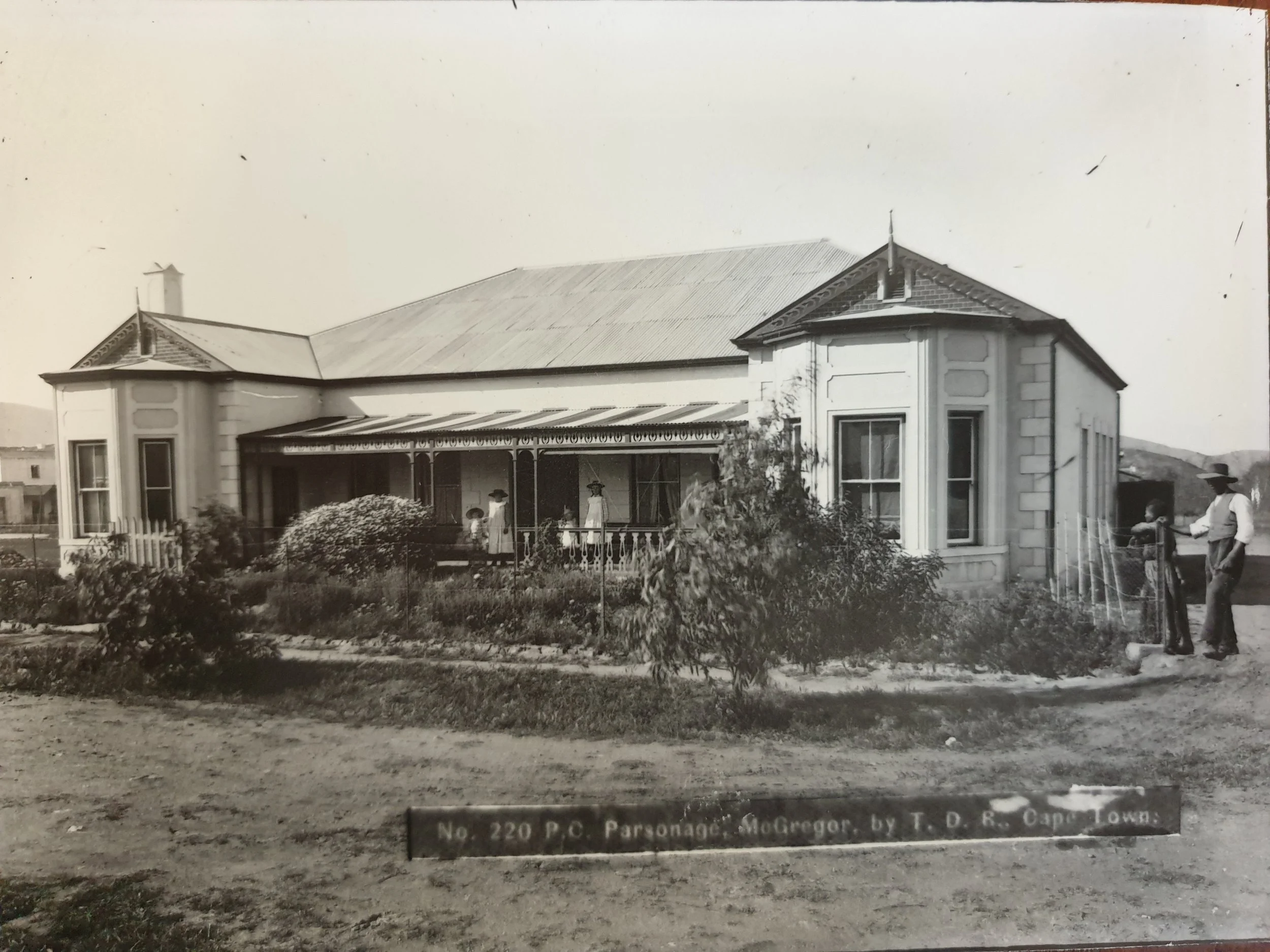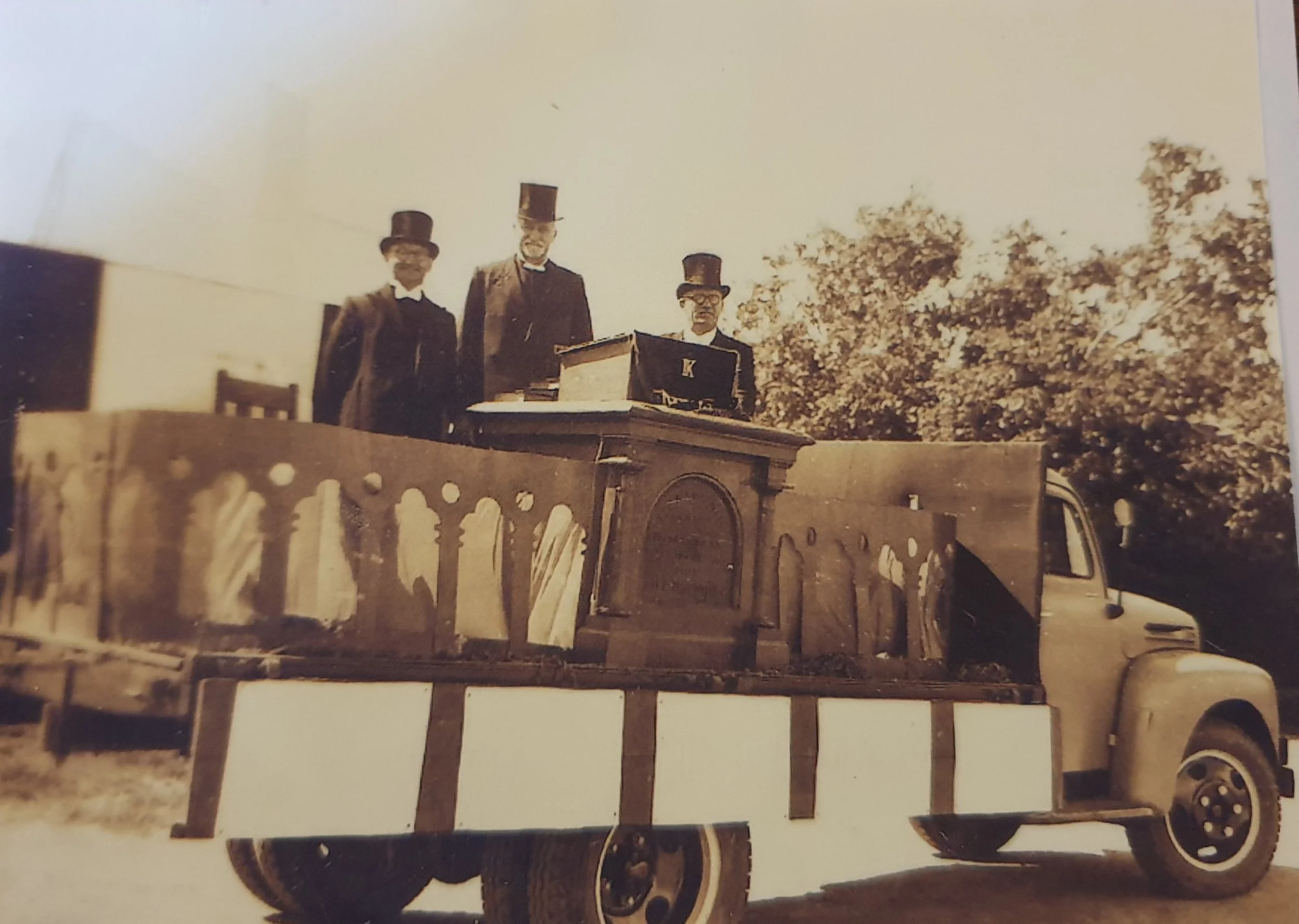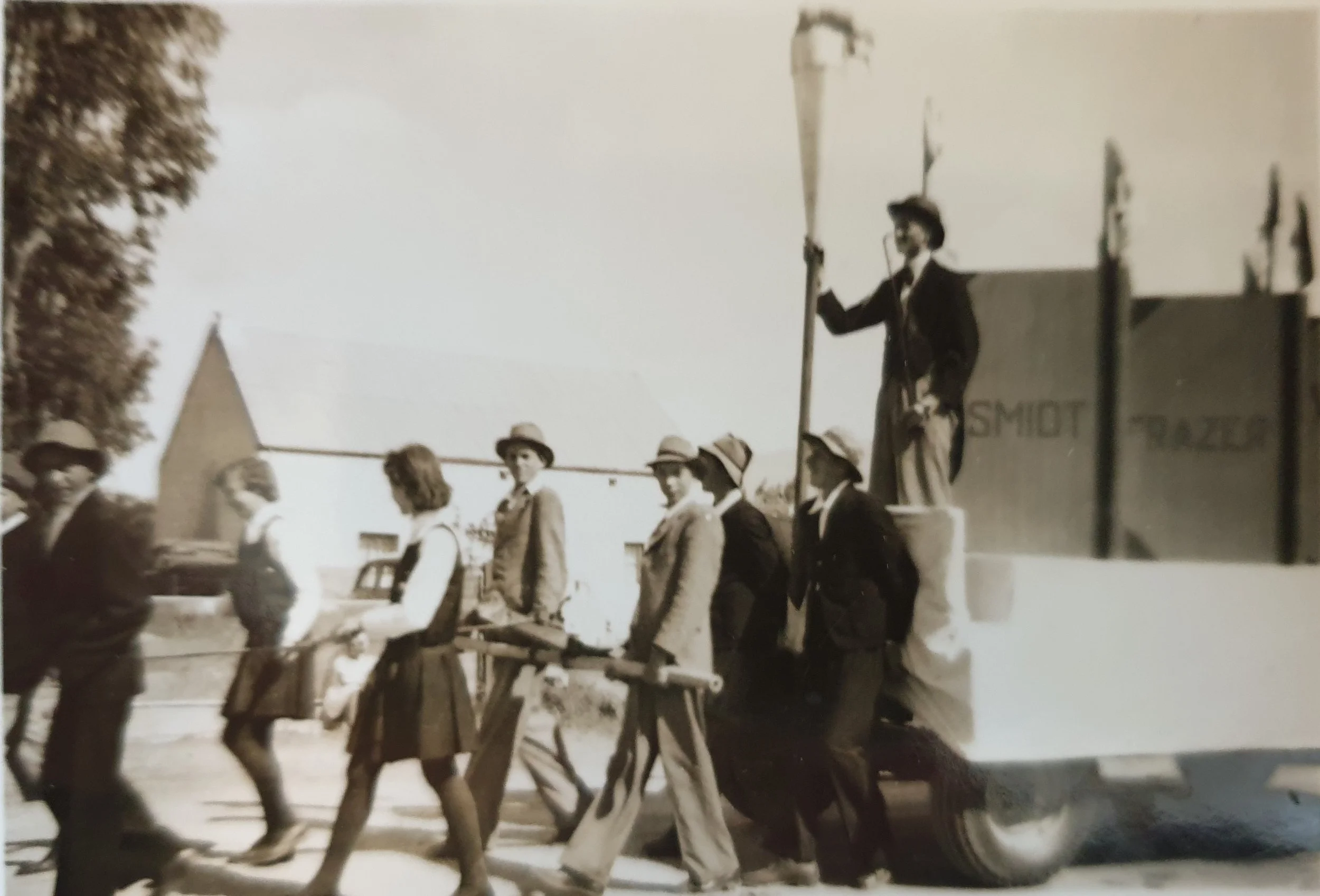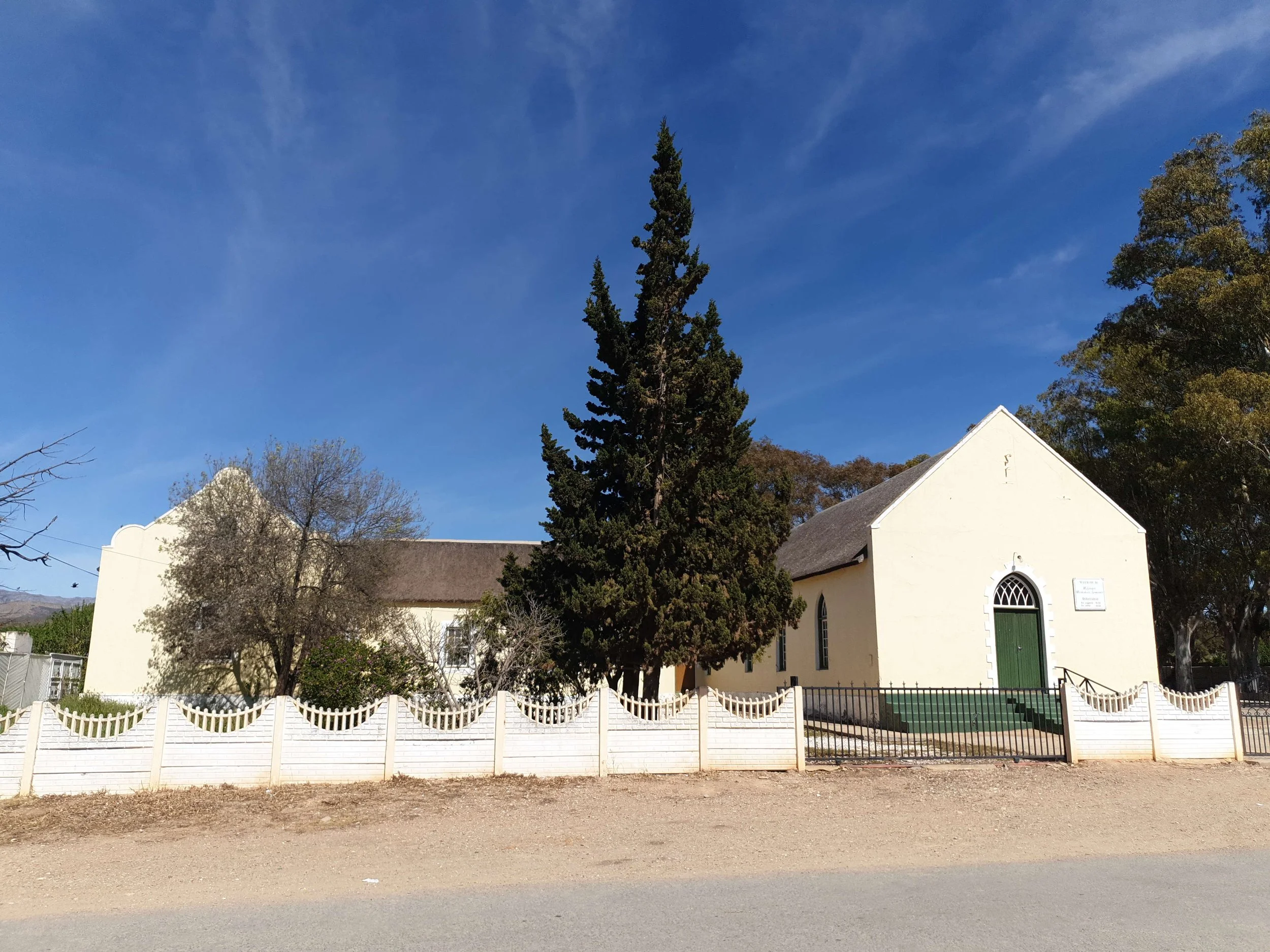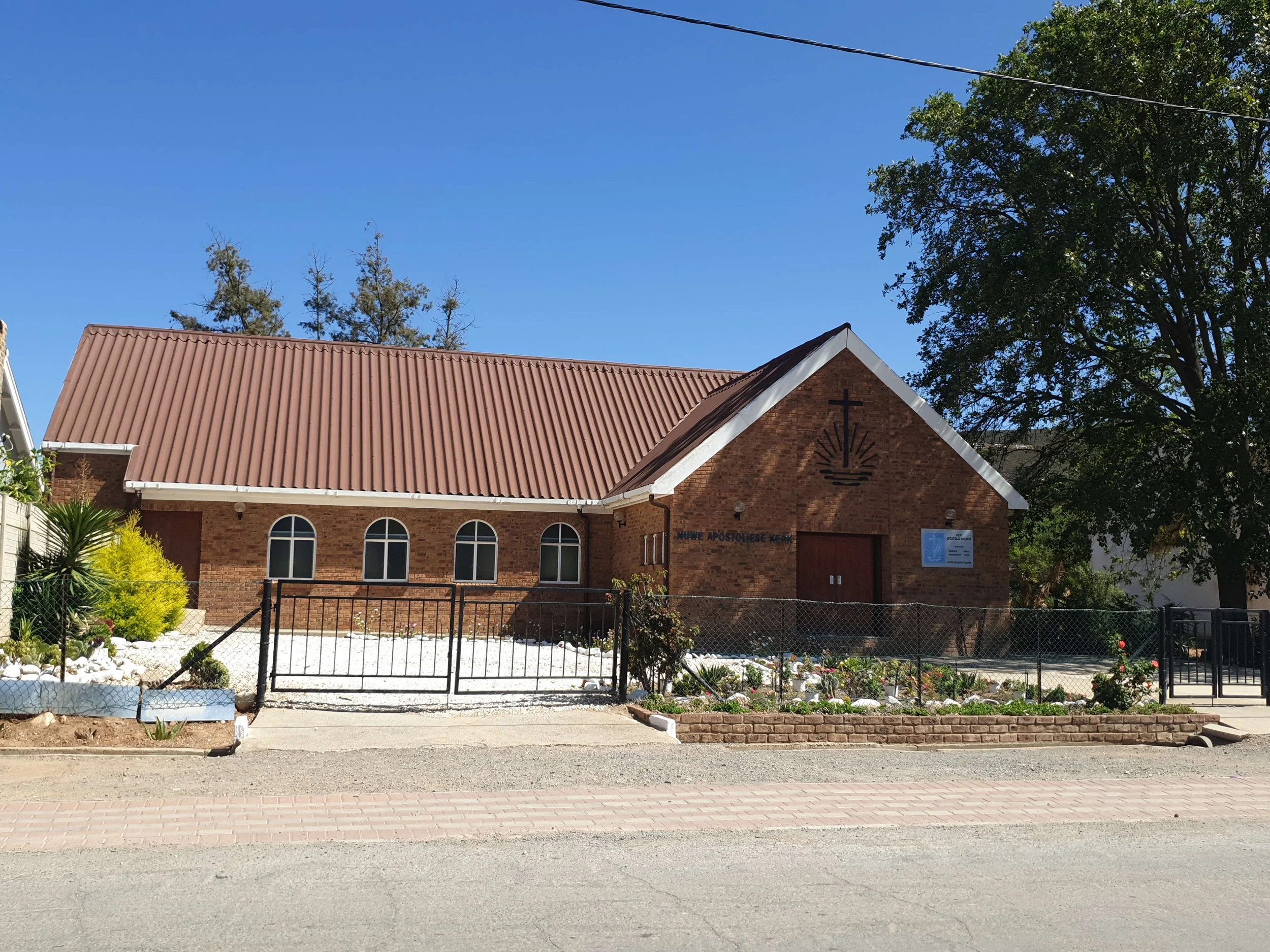
McGREGOR CHURCHES
In the years before the village was officially founded, the Moravian missionaries of Genadendal started the Bosjesveld congregation to cater to the needs of the early Free Burghers. Every month the Minister and churchmen of Genadendal walked over the mountain along the Boesmanskloof trail to minister to the spiritual needs of their congregation. Along with the gospel they brought their knowledge of building and crafts.
The Nederduitse Gereformeerde Kerk of McGregor (N.G. Kerk, or Dutch Reformed Church) was established on 17 December 1902. Before 1867, services were held in a barn on the same property as 1 Church Street. It was then decided to build a formal, non-denominational multifunctional school hall that could also cater for church services. The building was in the Neo-Gothic Revival style, which incorporated a church-like atmosphere. Services were held there between from 1867 to 1906.
In this period, farmers came into the village every three months for holy communion, and built simple, vernacular cottages known as nagmaal huisies. There still remains a row of terraced cottages from this era, known as Die Trein (The Train), in Voortrekker Street.
Prior to 1902, the NG Kerk received no financial aid from the national NGK church fund. However, on 10 March 1901 the first steps were taken towards an independent parish in Lady Grey with the election of seven directors. This had become necessary as the serving minister from Robertson visited less frequently and relied on the missionaries, particularly the Rev. Stephan Weich, to take care of the community’s spiritual needs. The Rev. Weich had his own obligations, and as a result the NG Kerk members in Lady Grey were neglected, as many could not afford transport to Robertson, which exacerbated the situation.
In 1902 an official letter requested permission to create a new parish, reasoning as follows:
Lady Grey at the time has 1000 souls belonging to the NG Church, and in addition there is an established school with three teachers and 78 pupils, and a Sunday School with about 100 children… Such a town deserves its own parish.
This led to the establishment of the NG Kerk McGregor, whose congregation and village was named after Reverend Andrew McGregor, in honour of his 40-year service to the Robertson congregation and patronage of McGregor. The Rev. JG Webber was the first minister and guided the congregation for 21 years from 1903, followed by Rev. JL Fourie in 1936.
Land was donated for a church building and its foundation stone was laid on 21 November 1904. The architect was Folkert Wilko Hesse, who saw the church completed in 1905. The official church inauguration was on 28 June 1905, which also saw the first use of the baptism font. The Psalms and hymn books were donated on 13 May 1903, and the church organ was installed in 1909. The church parsonage, known as the Ou Pastorie (Old Vicarage), was built across the road in Church Street in 1906.
Curious Fact:
The original tall church steeple blew off in 1951. The wind was so bad that for weeks afterwards there were no birds, as they took refuge elsewhere. Students were writing their junior exams and on the day of the maths paper there was a terrifying gale, the steeple blew off and when the children came outside it was upside down on the vestry. Note that the present-day steeple is much shorter than the original one.
NG KERK
In 1859 the first Methodist missionary was appointed to the Robertson/Lady Grey valley. The Rev. Henry Tindall was appointed due to his previous experience and knowledge of Dutch. Lady Grey was included as a station within the Overberg Circuit, Cape District.
The following is documented in church records and dates to just after Lady Grey’s founding:
A retired Methodist missionary, Rev. Tindall, came to Lady Grey in 1857 and baptised four adults, married six couples and preached to about 40 people, by kind favour of a local farmer.
A few years on, in 1872, a beautiful vernacular Neo-Gothic styled Methodist Church was built, chiefly owing to the efforts of a Mr. Lindsay. The church hall was constructed in 1885, designed to relate to the church’s thatched roof and arched, gothic timber windows and doors.
The first Methodist manse was a thatched cottage on the corner of Voortrekker and Tindall Streets. This is where Rev. Tindall lived, after whom the street is named.
After the emancipation of slaves in 1834 the Methodist Church set out with a national mandate to help former slaves rebuild their lives and find new homes and occupations. Soon after the village of Lady Grey was established, in 1871 Rev. Tindall bought 44 plots intending to attract freed slaves and start a mission station in Lady Grey, but this plan did not come to fruition. The plots were sold to church parishioners instead. They were located around the Barry, Loop and Kantoor Street areas, and were noticeably smaller than other agricultural plots in the village.
This smaller size was partly due to affordability but also aimed at creating a higher-density area as a village centre, which included the old Police Station and Magistrates Court and the main road out of town towards Robertson, which originally led out via Kantoor Street.
The Methodist Church’s community involvement also included establishing the Lady Grey Methodist School, which focused on educating children from the greater Over-den-Berg region, as well as village children. It eventually grew into what is now called the McGregor Primary School.
METHODIST CHURCH
NEW APOSTOLIC CHURCH
The New Apostolic Church in McGregor was established in 1959. Brother Hamilton relocated from Crawford in Cape Town to look after his mother, who lived in McGregor. Even though she was not New Apostolic, she allowed her son to hold sermons at 4pm on Sunday afternoons in her living room. Thus began the congregation.
As time went on, Brother Hamilton and family grew their congregation through belief and community connection. Brother Piet Stanfliet, from Robertson, shared sermons between the two towns.
In 1963 a district visit was made, and it was then decided that work should begin in earnest to establish a McGregor congregation formally. A guest priest from Cape Town, Brother Barnes, came to McGregor to give a sermon, and there were so many people in attendance that they could not all fit into the house, and many landed up sitting on the lawn. Oudste Afrika was chosen to lead the McGregor congregation, and for three years did so with his trust in faith to bring children to God. At this point there were three sermons being held each week. Various families were blessed into the church, including the van Reenen, Plaatjies, Page, and Stanfliet families.
After eight years of sermons being held in the living room of the Hamilton household, it was decided to seek a larger, more accommodating venue. A venue offered by the Plaatjies family as a small hall was quickly outgrown, and it was then arranged with the district apostle to purchase a plot from Abraham Page. A purpose-built church was opened on 17 September 1972, but this, too, quickly grew too small. On 8 May 1983, through the support of the district apostle, the Temple was inaugurated as the main church.
Over the years the New Apostolic Church of McGregor has developed into a community where people have a strong sense of belonging. A notable feature of the congregation is their ever-dedicated spirit of community support, which aims to give life-giving support to uplift all in McGregor.
Previously known as the Dutch Reformed Mission Church, no history of this active community church is on record. The church building was built prior to 1943 and the church hall was built between 1973 and 1987. There is a bell tower attached to the hall for the call to prayer.
VG KERK – ROBERTSON WEST
Church services were at first held in the cottage on the corner of Barry and Long Streets, which was built prior to 1943. The hall was initially built as the church in 1959 and bears the title Mev. Stemmet AGS Gedenk Kerk Saal 1959. Since then the congregation has grown, leading to a newer, purpose-built church being constructed between 1997 and 2003. No history of the church is on record.

